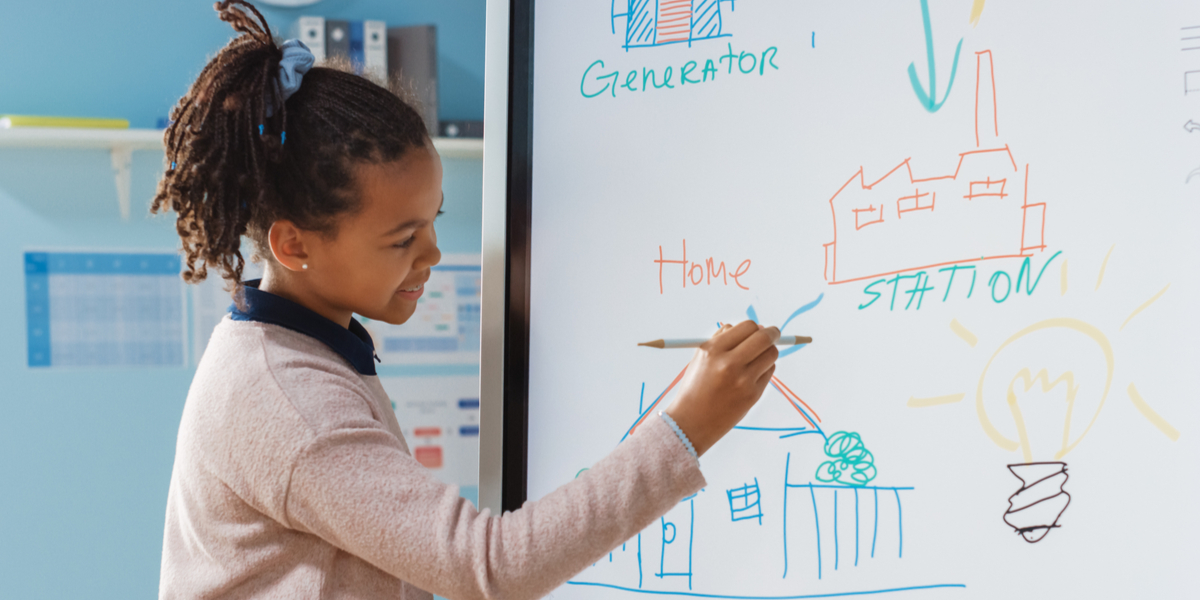Building Energy Literacy Among the Next Generation
Let's Save Energy
Alliance to Save Energy's Blog

This interview with Alliance Education Program Manager Doug Abbott was originally posted by Reduce Energy Use DC. Doug Abbott joined the Alliance in December 2019. In his role, he works with schools throughout New Jersey to implement energy efficiency measures as part of the EmPowered Schools program.
Can you tell us about your role with the Alliance to Save Energy?
As the Program Manager, Education, I work with our team to educate K-12 students on the importance of energy efficiency, primarily through the EmPowered Schools program. EmPowered Schools is a year-long, standards-aligned, STEAM-based curriculum that teaches students about energy and energy efficiency and positions them to lead energy-saving campaigns in their schools, homes, and communities. We currently have programs running in ten states, serving 192 schools.
Can you share any personal insights about saving energy that are important to you?
There are two insights about saving energy that stick with me: behavior matters and, relatedly, habits make an impact. It’s easy to make small behavior changes when you first learn about energy efficiency and are energized (no pun intended) to act. But sticking to those changes is how your small energy-saving measures make a large, cumulative impact. Turning off lights when you leave a room, turning down the HVAC when you leave your home, and walking or biking to work or school is great, but making them a habit is how you make a difference.
This is an area where I think EmPowered Schools shines. The long implementation period and specific activities like light switch and water saving reminders allow students to create lasting change, not just in their own lives but also in their homes and throughout their communities.
Your team has written about building energy literacy. What are some of the key takeaways for Reduce Energy Use DC blog readers?
One takeaway from our experience is to connect students with content that affects their everyday lives. My colleague, Audrey Christopher, wrote an excellent post on the interrelatedness of STEAM education and energy efficiency. Using Haskell STEAM Magnet Elementary School in the Los Angeles Unified School District as a case study, she showed how capitalizing on students’ desire for agency through leadership opportunities and their enthusiasm about the environment enables them to bring their knowledge outside of the classroom and save energy.
Audrey also raises what could be the program’s most important aspect – making students messengers for energy efficiency to their broader communities. Students are trusted members of their communities whom parents, friends, and neighbors are eager to support. Students also speak the languages necessary to educate hard-to-reach groups on energy efficiency and allow them to share in its benefits.
How does your work advising schools and students about effective energy saving practices help the larger community?
EmPowered Schools is a win-win-win program for communities with participating schools. Their students win because they engage with rigorous STEAM curriculum, build their leadership capacity, and explore new career paths. Participating schools win because they see greater student engagement and achieve significant financial savings – schools achieve an average of 5-15% savings on their energy bills, which, for some districts, means tens of thousands of dollars. Finally, communities benefit from reduced energy costs, new educational and career opportunities for their children, and – longer term – from reduced greenhouse gas emissions and cleaner air.
These benefits are particularly impactful in low- and middle-income communities where students tend to have less access to STEAM curriculum and exposure to green careers, higher energy burdens, and often receive the brunt of the impact from climate change and pollution.
Are there job opportunities available for those interested in your mission?
The Alliance regularly posts positions on our website. If you’re specifically interested in working on the education team, keep an eye on the job listings as we’re continuing to expand. I’m also happy to chat if you’d like to learn more about our work (dabbott@ase.org).
What is the most important piece of information that you wish everyone knew about saving energy?
Energy efficiency measures could account for up to 40% of the necessary carbon emissions reductions to avoid the worst effects of climate change. It doesn’t get the coverage that wind, solar, EVs, and other more visible climate solutions receive, but it is the single biggest piece of the solution and one that we can all leverage today.
STAY EMPOWERED
Help the Alliance advocate for policies to use energy more efficiently – supporting job creation, reduced emissions, and lower costs. Contact your member of Congress.
Energy efficiency is smart, nonpartisan, and practical. So are we. Our strength comes from an unparalleled group of Alliance Associates working collaboratively under the Alliance umbrella to pave the way for energy efficiency gains.
The power of efficiency is in your hands. Supporting the Alliance means supporting a vision for using energy more productively to achieve economic growth, a cleaner environment, and greater energy security, affordability, and reliability.



